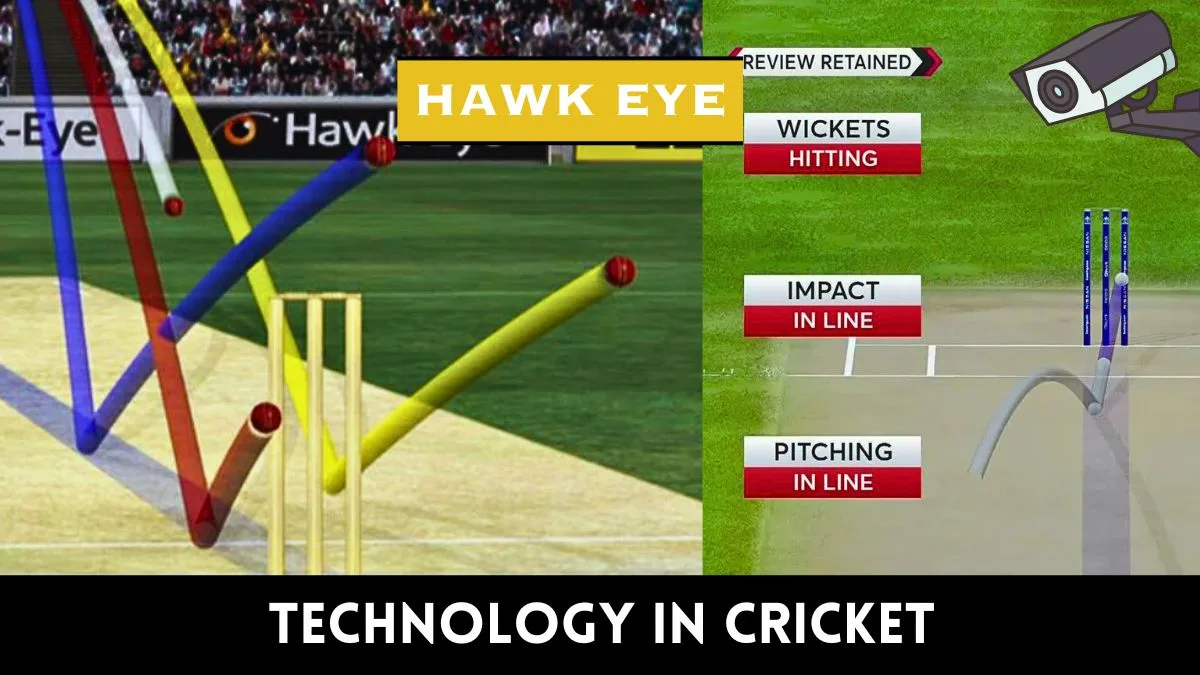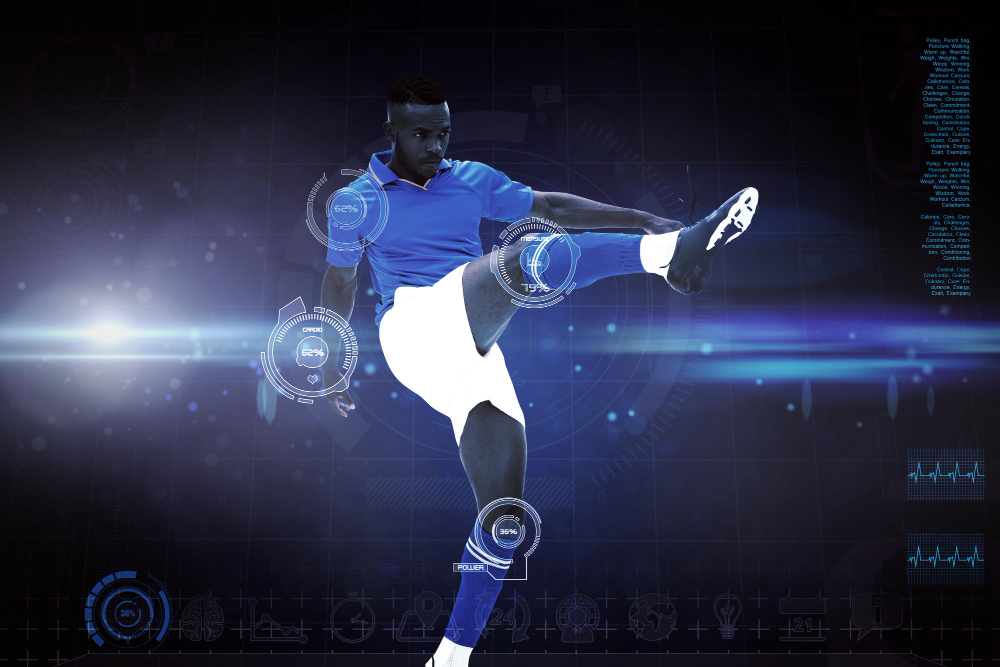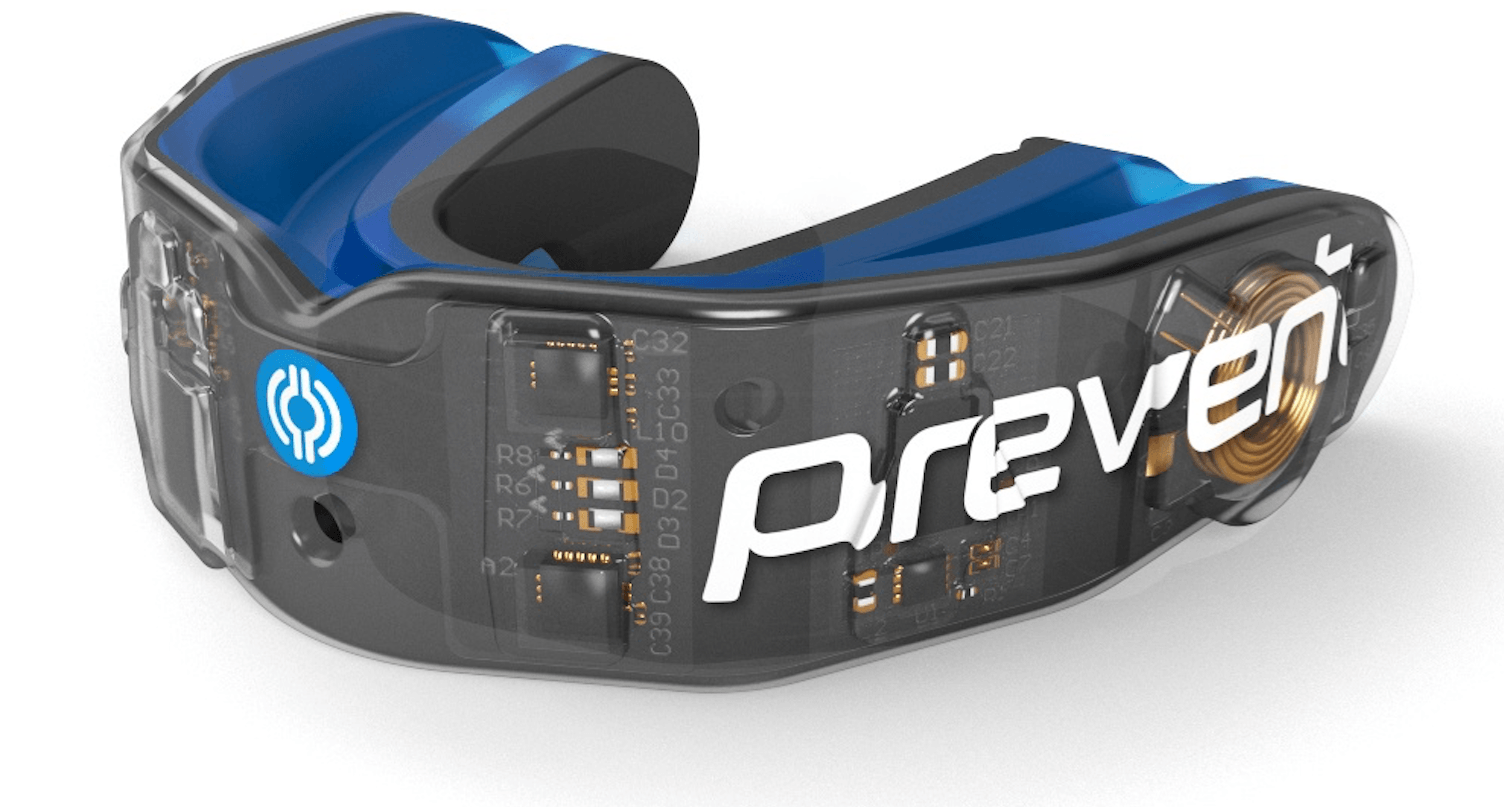Technology in Sports: Does it improve the game?
- 1 How Tech Is Improving the Gaming Sector
- 1.1 Ensuring Fair Play with VAR, Hawk-Eye, and Automated Offside Technology
- 1.2 Advancing Safety and Transparency with Smart Mouthguards and Mic’d Up Referees
- 1.3 Elevating Training and Performance with Wearable Sensors, VR Training, and Biomechanical Analysis
- 1.4 Enhancing Fan Experience through Immersive Technologies
- 1.5 Empowering Athletes through Data Analytics and Performance Tracking
- 1.6 Promoting Inclusivity and Accessibility through Adaptive Equipment and Assistive Technologies
- 1.7 Addressing Ethical and Regulatory Challenges in Sports Technology
- 2 Conclusion
- 2.1 FAQs:
- 2.1.1 How does VAR work in soccer?
- 2.1.2 What are smart mouthguards, and how do they enhance safety in rugby?
- 2.1.3 What is the purpose of mic’d-up referees in rugby?
- 2.1.4 How do wearable sensors benefit athletes in training?
- 2.1.5 What is VR training, and how does it improve athlete performance?
- 2.1.6 How do AR and VR technologies enhance the fan experience?
- 2.1.7 What are adaptive equipment and assistive technologies in sports?
- 2.1.8 What ethical considerations arise with data analytics in sports?
- 2.1.9 How can sports technology promote inclusivity and accessibility?
- 2.1.10 What regulatory challenges exist in the integration of technology into sports?
In Short:
- Advancements: Technology has revolutionized sports through innovations like VAR, smart mouthguards, and VR training, enhancing accuracy, safety, and performance analysis.
- Challenges: Despite benefits, there are concerns about interruptions, over-reliance on data, and ethical implications, necessitating a balanced approach to preserve the essence of sports.
- Impact: From improving fan engagement to promoting inclusivity and addressing regulatory challenges, sports technology continues to shape the future of athletics while upholding core values.
The integration of technology into sports has been transformative, enhancing the accuracy, safety, and immersive experience of the game for players and fans alike. From the implementation of the Video Assistant Referee (VAR) to the innovative use of smart mouthguards, each technological advancement contributes significantly to the evolution of sports. However, this evolution has not been without its criticisms.
How Tech Is Improving the Gaming Sector
Ensuring Fair Play with VAR, Hawk-Eye, and Automated Offside Technology

VAR and technologies like Hawk-Eye and Automated Offside Technology were introduced in football to enhance decision-making accuracy on key calls such as goals and penalties, aiming to reduce human error.
However, VAR has been criticized for interrupting game flow, causing delays, and leading to confusion among players, officials, and fans. Critics point to inconsistencies and the subjective interpretation of rules. Plus, they say that the technology detracts from the spontaneity and emotional engagement of the sport.
Advancing Safety and Transparency with Smart Mouthguards and Mic’d Up Referees
Over in the world of rugby, the 2024 Six Nations tournament has introduced a significant leap in player safety: smart mouthguards. This now marks the tournament as a pioneer in utilizing technology to protect athletes.
These innovative mouthguards provide real-time data on impact forces, which is crucial for assessing concussion risks and enhancing the head injury assessment protocol. This advancement, coupled with the transparency offered by mic ‘d-up referees, underscores rugby’s commitment to player welfare and the integrity of the game. By integrating these technologies, the Six Nations showcases a model of how sports can leverage advanced tools to improve safety, fairness, and fan engagement.
Elevating Training and Performance with Wearable Sensors, VR Training, and Biomechanical Analysis
Wearable sensors and VR training have revolutionized athlete preparation and performance analysis. Sensors track vital performance metrics, tailoring training to individual athlete needs and preventing injuries. VR immerses athletes in simulated environments, enhancing cognitive and physical skills without the physical toll of real-life play. However, critics raise concerns about over-reliance on technology potentially overshadowing human elements and instincts that have traditionally governed the sport.
Enhancing Fan Experience through Immersive Technologies
In addition to improving gameplay and safety, technology has also transformed the way fans engage with their favourite sports. Augmented Reality (AR) and Virtual Reality (VR) applications have been developed to offer fans an immersive experience, allowing them to feel like they’re right in the action from the comfort of their homes. Whether it’s experiencing the atmosphere of a live game through VR broadcasts or interacting with AR overlays providing real-time statistics and player insights during matches, these technologies have redefined how fans consume sports content. However, concerns have been raised about the potential disconnect between the in-person experience of attending a live event and the virtual experience offered by these technologies.
Empowering Athletes through Data Analytics and Performance Tracking
Beyond the physical aspects of training and gameplay, technology has revolutionized the way athletes analyze and optimize their performance. Data analytics platforms gather vast amounts of data during training sessions and games, providing coaches and athletes with valuable insights into player movements, tactics, and physiological metrics. This data-driven approach enables more informed decision-making regarding training regimens, game strategies, and player development, ultimately leading to improved performance on the field. However, there are ethical considerations surrounding data privacy and the potential for data-driven strategies to become overly deterministic, potentially stifling creativity and innovation in sports.
Promoting Inclusivity and Accessibility through Adaptive Equipment and Assistive Technologies
Technology has also played a crucial role in making sports more inclusive and accessible to individuals with disabilities. Adaptive equipment, such as prosthetic limbs and specialized wheelchairs, enables athletes with physical impairments to participate in a wide range of sports at both recreational and competitive levels. Furthermore, assistive technologies, such as audio-based cues for visually impaired athletes or wheelchair-friendly sports facilities, ensure that everyone can enjoy the benefits of sports regardless of their abilities. Despite these advancements, there is still progress to be made in addressing socio-economic barriers to access and ensuring that adaptive sports receive adequate support and recognition.
Addressing Ethical and Regulatory Challenges in Sports Technology
As sports technology continues to evolve, it raises important ethical and regulatory questions that need to be addressed. Issues such as data privacy, athlete consent, and the potential for technological enhancements to create unfair advantages or disrupt the integrity of the game require careful consideration. Regulatory bodies and sports organizations must collaborate with technologists, athletes, and other stakeholders to develop clear guidelines and standards that uphold the values of fairness, safety, and transparency in sports. Additionally, ongoing research and dialogue are needed to anticipate and mitigate the potential unintended consequences of emerging technologies in sports.
Conclusion
Despite criticisms, the benefits of sports technologies like smart mouthguards and VAR cannot be ignored, offering enhanced safety, transparency, and fairness. Success hinges on refining these technologies to reduce disruptions and amplify their benefits. As sports integrate more technology, striking a balance with tradition is essential, aiming to enhance the human elements of sports, ensuring games stay engaging, fair, and safe.
FAQs:
How does VAR work in soccer?
VAR (Video Assistant Referee) involves video replays reviewed by officials to ensure accurate decisions on goals, penalties, and red cards.
What are smart mouthguards, and how do they enhance safety in rugby?
Smart mouthguards use sensors to measure impact forces, aiding in concussion assessment and player safety during rugby matches.
What is the purpose of mic’d-up referees in rugby?
Mic’d-up referees provide transparency and enhance communication between officials and players, contributing to fair play and integrity in the game.
How do wearable sensors benefit athletes in training?
Wearable sensors track performance metrics to tailor training, prevent injuries, and optimize athlete development based on individual needs.
What is VR training, and how does it improve athlete performance?
VR training immerses athletes in simulated environments, enhancing cognitive and physical skills without the physical toll of real-life play.
How do AR and VR technologies enhance the fan experience?
AR and VR applications offer fans immersive experiences, providing real-time statistics, player insights, and the atmosphere of live games from anywhere.
What are adaptive equipment and assistive technologies in sports?
Adaptive equipment, such as prosthetics and specialized wheelchairs, enables individuals with disabilities to participate in sports, while assistive technologies ensure inclusivity and accessibility.
What ethical considerations arise with data analytics in sports?
Ethical considerations include data privacy, athlete consent, and the potential for data-driven strategies to create unfair advantages or disrupt the integrity of the game.
How can sports technology promote inclusivity and accessibility?
Sports technology, through adaptive equipment and assistive technologies, ensures that individuals with disabilities can participate in sports and enjoy the benefits of athletic activity.
What regulatory challenges exist in the integration of technology into sports?
Regulatory challenges include developing clear guidelines and standards to uphold fairness, safety, and transparency, while addressing potential unintended consequences of emerging technologies.


















